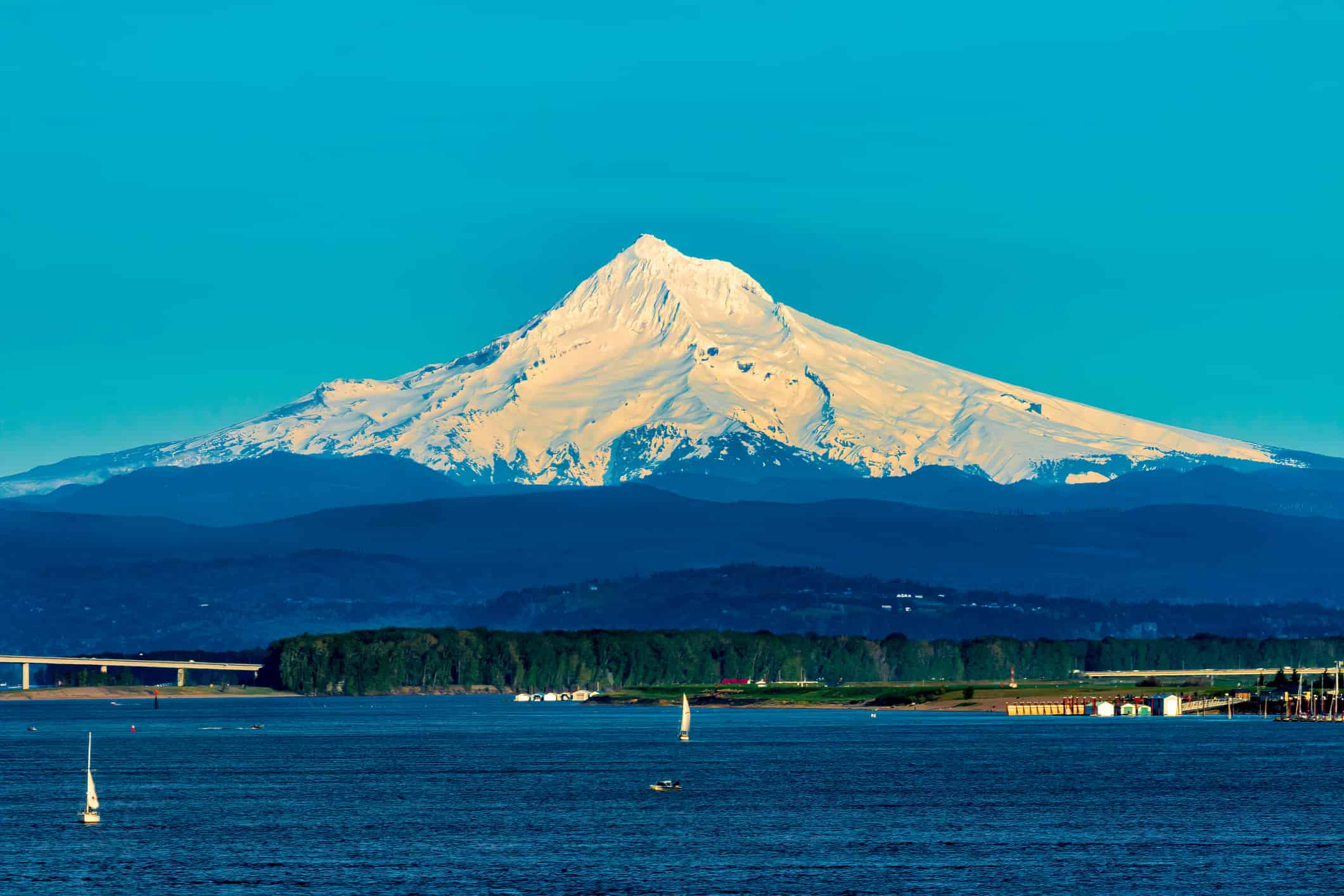If you’re in search of a memorable, breathtaking, and majestic vista, look no further than Mount Hood. This towering volcano near Portland, Oregon, is one of the most prominent peaks in North America and has struck awe and reverence in people for hundreds of thousands of years. Whether you’re an Oregon native, or just visiting the area, Mount Hood has an abundance of interesting history and facts to share with you. Here are 10 incredible facts about Mount Hood.
#1 Mount Hood Might Erupt Soon
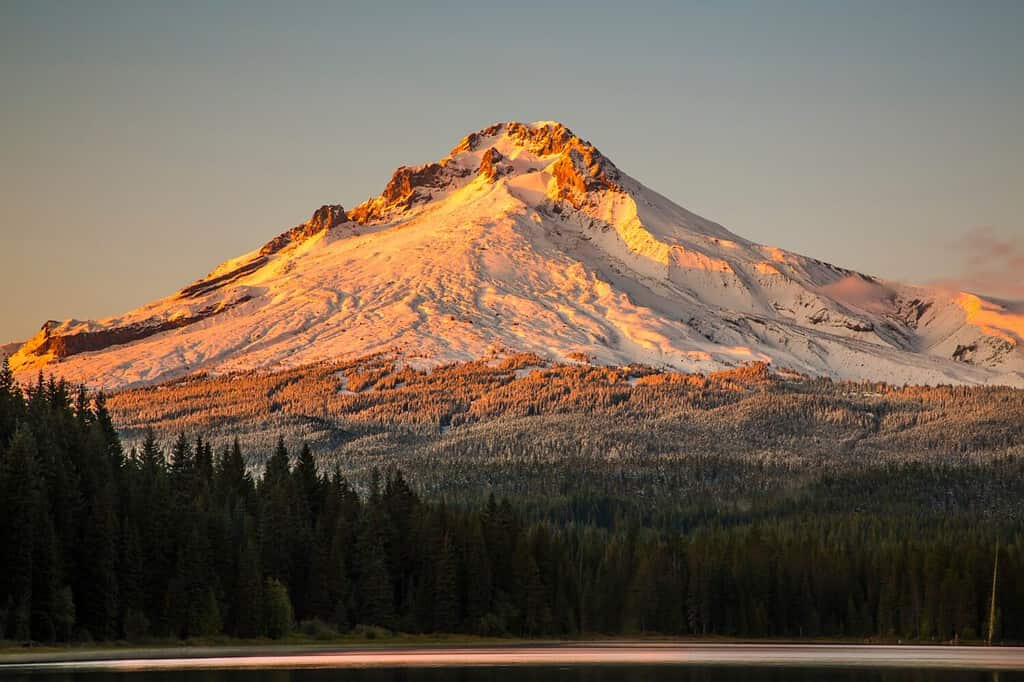
The prominent peak rises above the Mount Hood National Forest.
©kwan tse/Shutterstock.com
Even though most people call Mount Hood a dormant volcano, is it technically still active. Over the last 15,000 years, Mount Hood has experienced at least four major volcanic eruptions. Three of the last eruptions happened in the last 1,800 years. That is not very long ago on a geological timescale. The previous period of high volcanic activity was between 170 and 220 years ago, and the last major eruption happened right after Lewis and Clark documented the mountain, in 1805. Scientists recorded the last volcanic activity in 1907.
Every year, there are several earthquake swarms at Mount Hood, with some years having stronger earthquakes than others. Experts consider Mount Hood to be the volcano most likely to erupt in Oregon. Based on its history, however, any future eruption will not be explosive, like Mount St. Helens in Washington, but instead consist of mudflows, lava flows, and erupting hot springs and fumaroles. The United States Geological Survey says that Mount Hood is potentially active. The odds of Mount Hood erupting in the next 30 years are between 3% and 7%.
#2 Mount Hood Is The Highest Point in Oregon
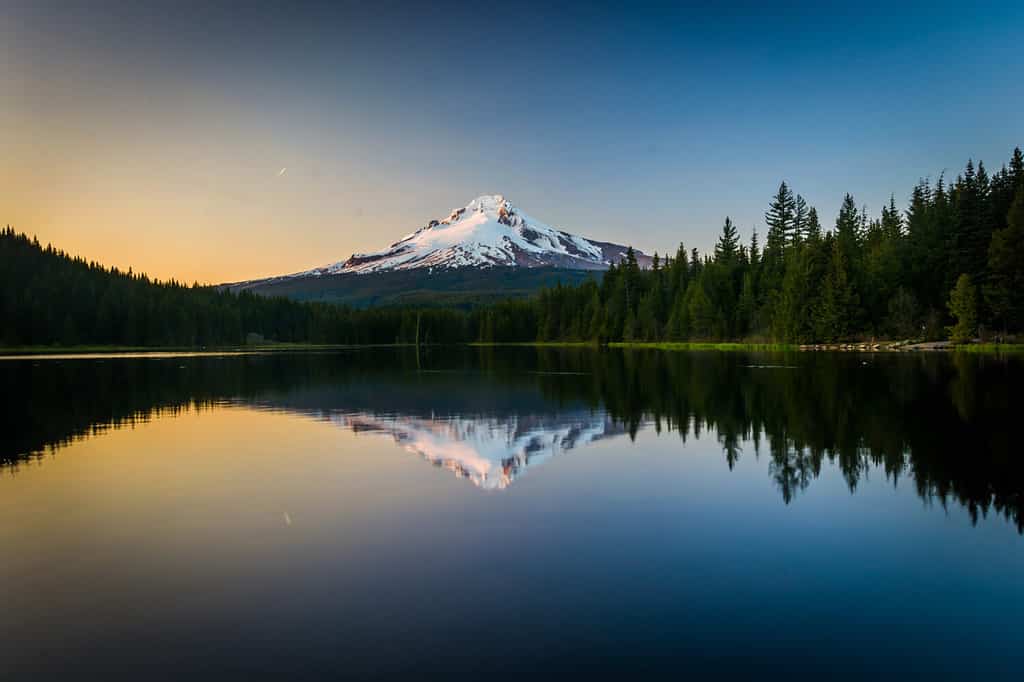
Snowfields and glaciers remain on Mount Hood all year.
©ESB Professional/Shutterstock.com
Mount Hood reaches a height of around 11,240 feet. During the 1800s, early explorers on the nearby Columbia River actually correctly estimated the elevation to be between 10,000 and 12,000 feet. Subsequent climbers and explorers estimated the height to be anywhere between 10,000 and 20,000 feet. Many believed that Mount Hood was the tallest mountain in North America for several years.
Something that probably contributed to the overestimation of its height, is the fact that Mount Hood is one of the most prominent mountains in North America. Prominence is a measure of the distance between the peak of the mountain and the area that surrounds it. Because Mount Hood rises from a relatively low terrain, it makes the mountain look taller and bigger than other mountains that are actually taller than it. It is so prominent, that you can even see Mount Hood from over 100 miles away. Mount Hood is actually the 28th most prominent mountain in the United States.
#3 Mount Hood has Many Names
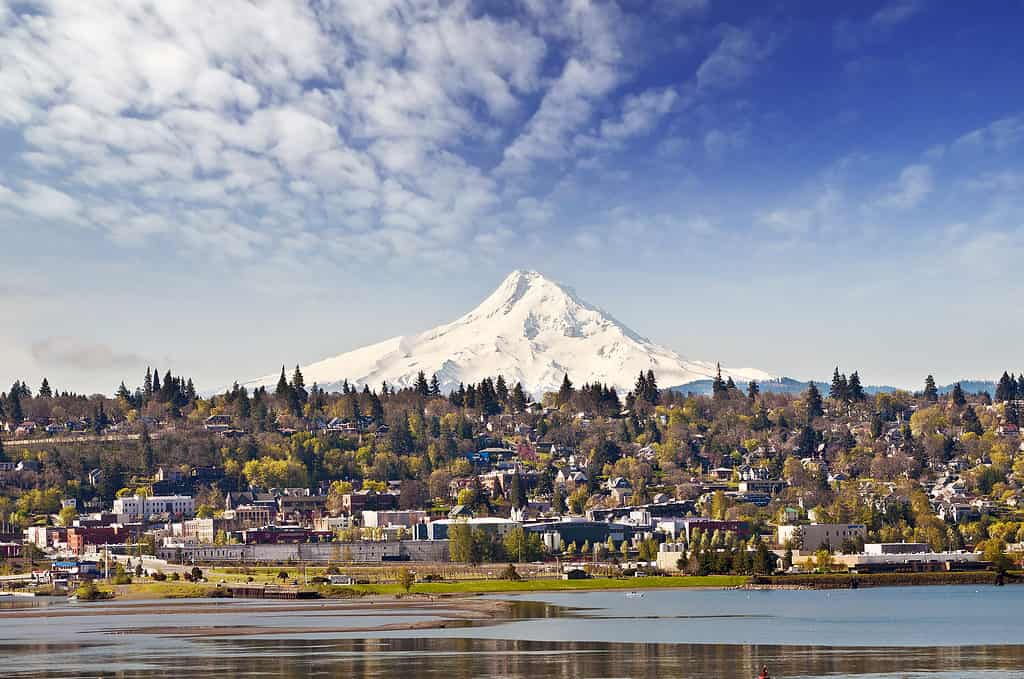
Mount Hood rises above the Hood River.
©Tusharkoley/Shutterstock.com
Mount Hood is named after Samuel Hood, a British Admiral who fought during the Battle for the Chesapeake during the American Revolutionary War. Lieutenant William Broughton named the mountain Mount Hood on October 29, 1792, when he saw it while exploring with George Vancouver’s expedition.
When Lewis and Clark found the mountain in 1805, they named it Falls Mountain or Timm Mountain. They used both names because Timm was the word in the local native American language for the nearby Celilo Falls. They later acknowledged it was the same mountain named Mount Hood.
French explorers saw the mountain during their exploration in 1818 and called it the Mountain of Snow, because of the large amount of snow and glaciers that are present on the mountain all year.
Mount Hood has also been known by the name, Wy-east, for over one hundred years. However, there is no evidence that this was its original native name, which has most likely been lost to history. This is, instead, a name given to the mountain by a white author retelling a Native American legend about the origin of the mountain. Experts agree this was a white-washing of its actual history, and the name has no basis in actual Native American lore.
#4 Nobody Knows Exactly How Tall Mount Hood Is
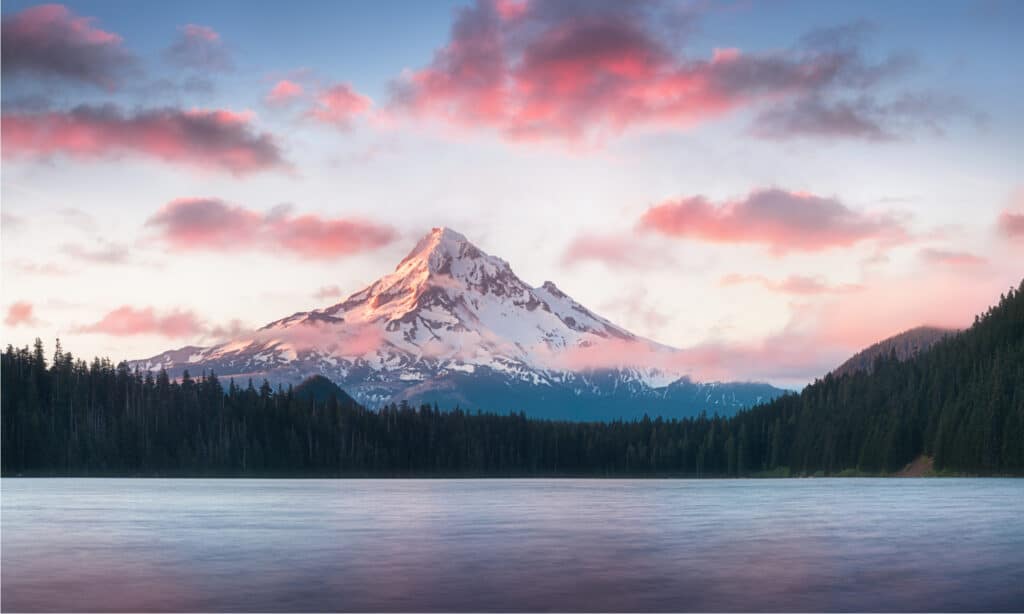
Mount Hood reflecting in Lost Lake at sunrise.
©Michal Balada/Shutterstock.com
The official height of Mount Hood, supported by the North American Vertical Datum, is 11,249 feet. Experts made this measurement in 1991. However, previous scientific measurements and subsequent studies have all come up with different numbers for its height.
This height has included 18,361 feet in 1854, 14,000 feet in 1857, 11,240 feet in 1993, and the most recent measurement of 11,235 feet in 2008. Whatever its actual height is, Mount Hood remains the tallest mountain in Oregon.
#5 Mount Hood Has 12 Named Glaciers
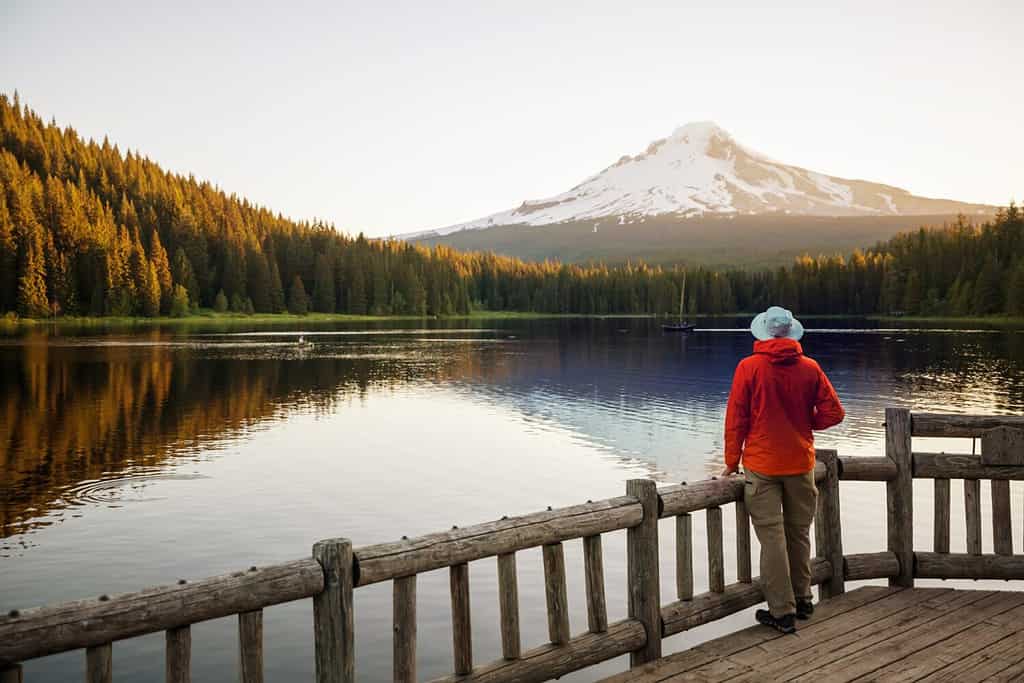
Thousands of people travel to Mount Hood every year just to see it, let alone climb it.
©Galyna Andrushko/Shutterstock.com
At the higher altitudes, glaciers cover over 80% of Mount Hood’s surface. While a majority is covered by snow and ice, only 12 of the major glacier sections have been named. These are Palmer, Coalman, White River, Newton Clark, Eliot, Langille, Coe, Ladd, Glisan, Sandy, Reid, and Zigzag. The largest glacier by surface area is Newton Clark which covers 491 acres. The largest glacier by volume is Eliot which contains over 73,000 acre-feet.
These glaciers make Mount Hood a stunning sight, a popular skiing destination, and also a perilous climbing destination. The glaciers are currently in a period of shrinking.
#6 Mount Hood Has The Only Year-Round Lift Skiing in North America
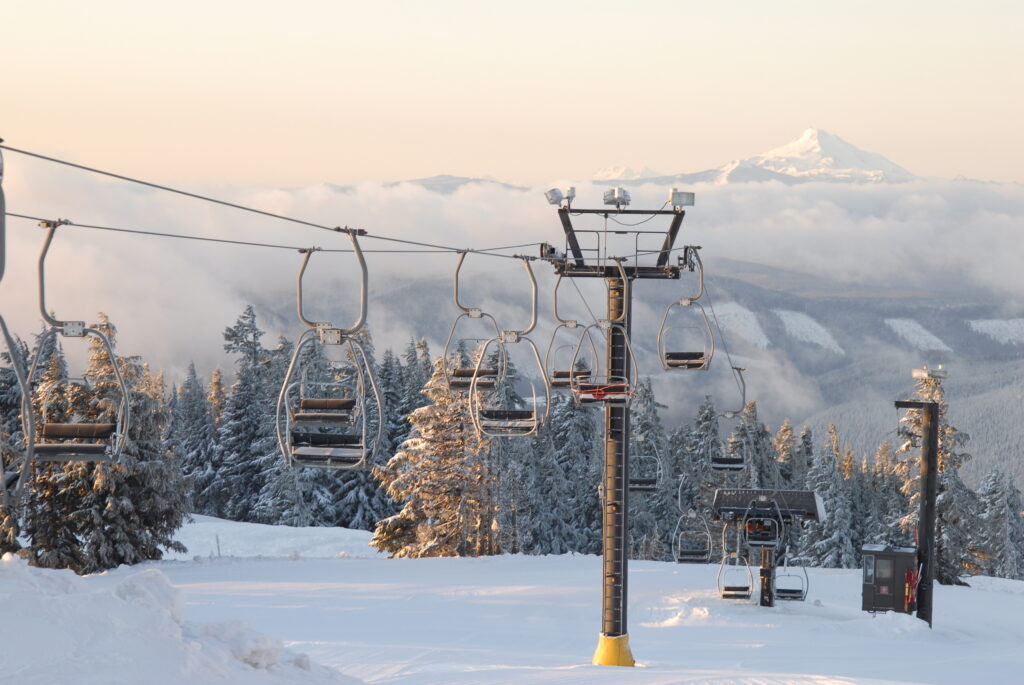
The Mt. Hood National Forest is very large, and there are lots of resorts and recreational areas nearby.
©mishaAshton/Shutterstock.com
Because of its height, 4,600 acres of skiing terrain, and ever-present glaciers, Mount Hood is one of the most popular skiing destinations in the world. It has the only year-round lift skiing in all of North America. You can find this lift at the Timberline Lodge at 6,940 feet elevation. The Timberline Lodge is unique because a majority of its ski runs are actually below the lodge, instead of above it like other resorts or lodges. If you’ve never experienced skiing in July, this is the perfect place to give it a try!
#7 Around 50 People are Rescued From Mount Hood Every Year
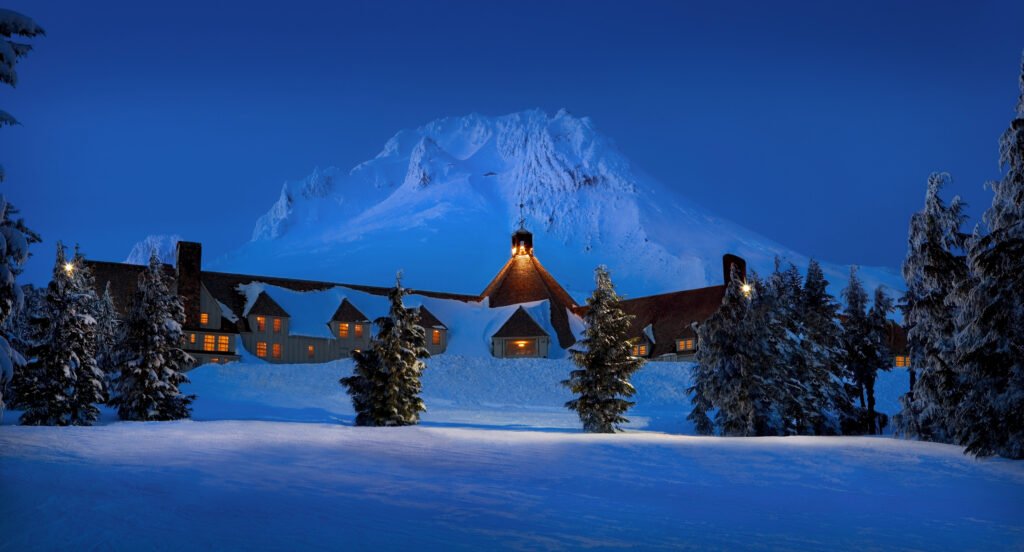
A ski lodge at the base of Mount Hood.
©Troy Maben/Shutterstock.com
There are no trails to the summit of Mount Hood, though there are popular routes. However, even the easiest routes still involve crossing deep creases, braving harsh weather, dodging falling rocks, and more. Expert climbers recommend that anyone attempting to climb Mount Hood bring ice axes, fall protection, professional climbing and safety gear, and be experienced in mountain and ice climbing.
Even with these precautions and recommendations, search and rescue workers need to save around 50 people from the sides of Mount Hood every year. More than 140 people have died while climbing Mount Hood. Most of the fatalities are from falls and hypothermia.
#8 Mount Hood Is The Second-Most Climbed Mountain in The World
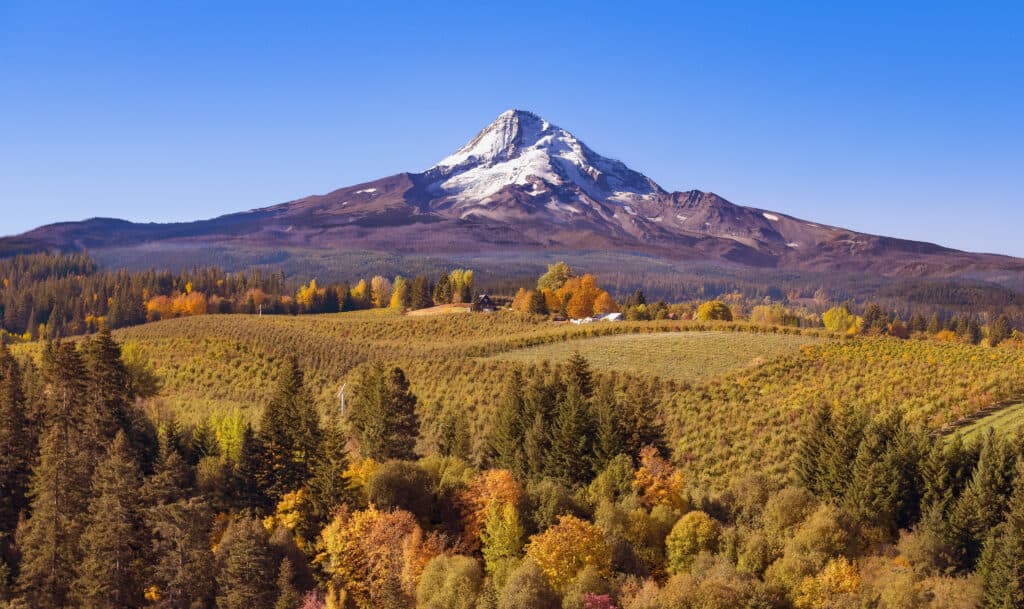
Around Mount Hood, we’d also suggest a fantastic location to enjoy the fall colors where the Clackamas River passes past Mount Hood.
©iStock.com/Chris Anson
Despite the risks inherent in climbing Mount Hood, thousands of people flock to this volcano every year. Around 10,000 people attempt the climb annually. If you don’t want to summit this peak, you can still hike the 1,000 miles of hiking trails that don’t require technical abilities or professional equipment.
Because of its easy accessibility, beautiful vistas, and interesting hiking and climbing trails, Mount Hood is the second-most climbed mountain in the world. The first is the sacred Mount Fuji.
#9 Ranger, The Famous Canine Alpinist, is Buried at The Peak
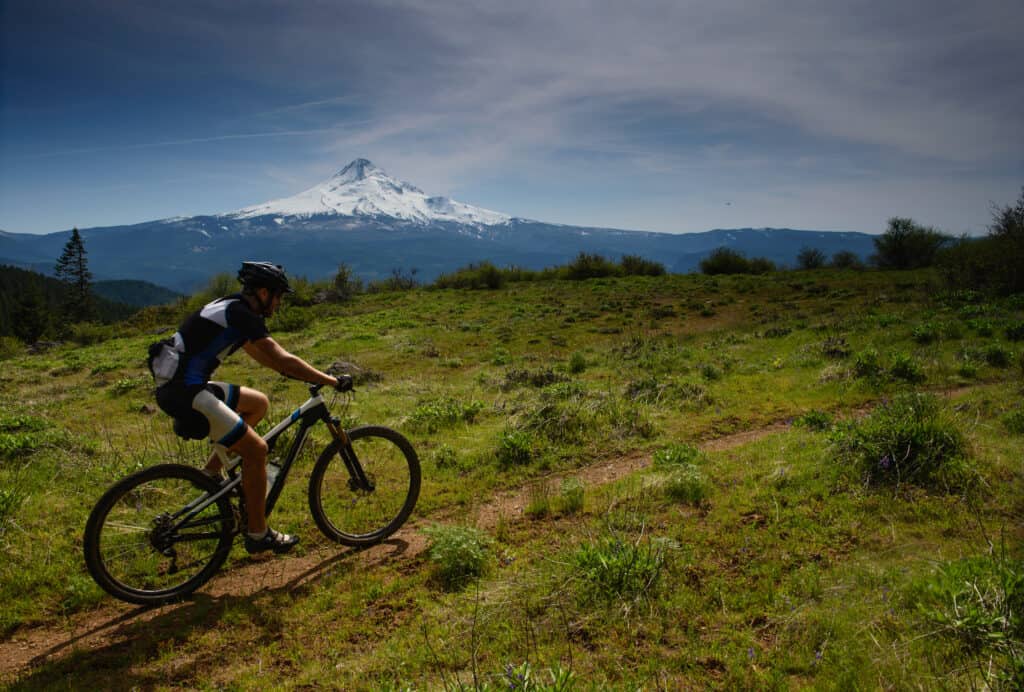
Mountain Biker on Surveyor’s Ridge Trail near Mount Hood.
©iStock.com/ikick
Ranger was the greatest climbing dog of Mount Hood. According to stories, he would climb the peak with the first climbing teams in the morning and descend with them until they met another party on their way up, at which point he would follow the new climbing party. Ranger summited Mount Hood over 500 times during his lifetime. After his death in in1940, his climbing partners carried his body to the peak where a stone cairn marks his resting place.
A record of his accomplishments, as well as his Summit Ribbon, are displayed at the Government Camp Hotel at Mount Hood.
#10 Mount Hood is Central to The Local Economy and Culture

Mount Hood soars above the timberline, where trees and flora cannot grow.
©Real Window Creative/Shutterstock.com
The United States Government forcefully took Mount Hood and the surrounding territory from the local Native American tribes. However, even before this seizure, this majestic peak has been a central point of pride and community for the people near its base.
Every year, millions of tourists and local residents spend millions of dollars visiting and appreciating Mount Hood, its surrounding national forests, and tourist destinations. In 2019 alone, visitors spent $601 million. In fact, the US Forest Service says that the two most important resources provided by Mount Hood are recreation and fresh water.
So important is the mountain to the people of Oregon, that they often just refer to Mount Hood as “the mountain” or “our mountain”, since no other rises as prominently as it does above the land.
Thank you for reading! Have some feedback for us? Contact the AZ Animals editorial team.

